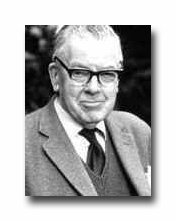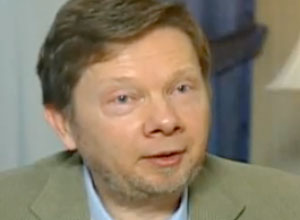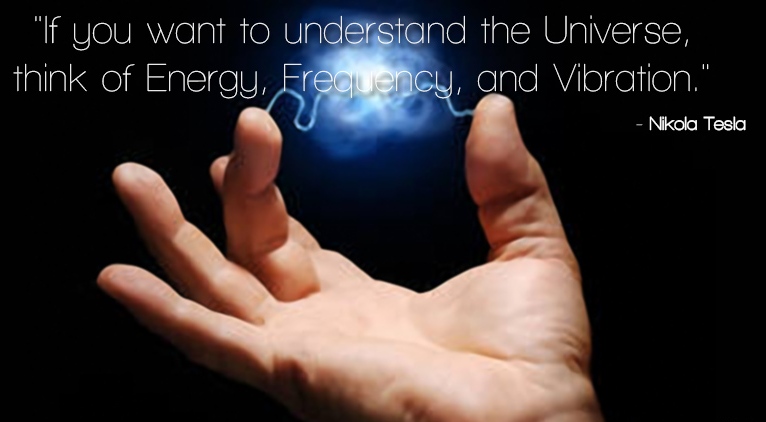|
home | what's new | other sites | contact | about |
||
|
Word Gems exploring self-realization, sacred personhood, and full humanity
Dr. F.F. Bruce
The following excerpts are from Paul: Apostle of The Heart Set Free by Dr. F.F. Bruce.
The Apostle Paul’s teaching regarding death and resurrection seems to offer us somewhat conflicting testimony. In 1 Cor. 15 Paul appears to be saying that when one “in Christ” dies he will find himself without a body; that is, he will “sleep” until the grand Second Coming of Christ, at which event Christians will be changed “in a twinkling of an eye,” forever then to be with the Lord.
1 Corinthians 15:50-53 50 Now this I say, brethren, that flesh and blood cannot inherit the kingdom of God; nor does corruption inherit incorruption. 51Behold, I tell you a mystery: We shall not all sleep, but we shall all be changed-- 52in a moment, in the twinkling of an eye, at the last trumpet. For the trumpet will sound, and the dead will be raised incorruptible, and we shall be changed. 53For this corruptible must put on incorruption, and this mortal must put on immortality.
However, in 2 Corinthians 4 and 5, written, scholars believe, about a year after the first letter, St. Paul quite apparently is of a different mind-set regarding the afterlife.
2 Cor. 4:14-18 14knowing that He who raised up the Lord Jesus will also raise us up with Jesus, and will present us with you. 15For all things are for your sakes, that grace, having spread through the many, may cause thanksgiving to abound to the glory of God. 16Therefore we do not lose heart. Even though our outward man is perishing, yet the inward man is being renewed day by day. 17For our light affliction, which is but for a moment, is working for us a far more exceeding and eternal weight of glory, 18while we do not look at the things which are seen, but at the things which are not seen. For the things which are seen are temporary, but the things which are not seen are eternal. 2 Cor. 5:1-8 For we know that if our earthly house, this tent, is destroyed, we have a building from God, a house not made with hands, eternal in the heavens. 2For in this we groan, earnestly desiring to be clothed with our habitation which is from heaven, 3if indeed, having been clothed, we shall not be found naked. 4For we who are in this tent groan, being burdened, not because we want to be unclothed, but further clothed, that mortality may be swallowed up by life. 5Now He who has prepared us for this very thing is God, who also has given us the Spirit as a guarantee. 6So we are always confident, knowing that while we are at home in the body we are absent from the Lord. 7For we walk by faith, not by sight. 8We are confident, yes, well pleased rather to be absent from the body and to be present with the Lord. 9 Therefore we make it our aim, whether present or absent, to be well pleasing to Him.
The spiritual crisis which Paul underwent towards the end of his Ephesian ministry as a result of his almost miraculous escape from what seemed imminent death has been described by one of the greatest New Testament students of the twentieth century ‘as a sort of second conversion’. It is pointed out in defence of this view that in the letters which can be dated after this crisis there is ‘a change of temper’: controversies are conducted in a more tolerant spirit, there is a readier acceptance of his apostolic hardships, a greater appreciation of the values of family life and ‘a sustained emphasis on the idea of reconciliation’. It is probably impossible to draw such a sharp line between Paul's attitude to life before this crisis and his attitude after it… Nevertheless, on a broad view of Paul's spiritual development, the thesis can, in general, be sustained; and there is one area of his thinking in which the effect of the crisis can be discerned with special clarity -- his thinking about the life to come. Paul's detailed views of the life to come before his conversion cannot be established with complete certainty. There was a wide variety of opinions in this field current in the Judaism of his time -- much wider than has been commonly supposed. In Jewish literature of the period between 200 B.C. and A.D. 100, it has been pointed out: ‘…statements on an immortality of the soul which excludes the resurrection of the body are almost as common as those which explicitly state the resurrection of the body, and the same proportions can be asserted for statements on the soul's life after death without exclusion of the body and texts which state the resurrection without explicit reference to the body' … What happens at death? Not until 2 Corinthians does Paul approach this question, so far as his extant correspondence is concerned. This may have been due in part to his expectation that he would survive until the parousia [the Second Coming]. In the nature of the case he could not know that he would survive until then, but in his earliest references to the subject he associates himself with those who will survive: ‘we who are left alive until the Lord comes shall not forestall those who have died’ (1 Thessalonians 4: 15) – ‘those who have died’ are mentioned in the third person but the survivors are mentioned in the inclusive first person plural. In 1 Corinthians 6:14 the first person plural is used of those who will experience resurrection: 'God not only raised our Lord from the dead; he will also raise us by his power' -- but here no distinction is drawn between those who have died and those who will still be alive, for Paul is emphasizing that the body comes within the scope of God's redemptive purpose and that present bodily actions have therefore a serious relevance for the future state of Christians; by us he means ‘us Christians’ in the most general sense. No significant shift of perspective is involved in 1 Corinthians: ‘we shall not all die, but we shall all be changed’, for at the parousia ‘the dead will rise immortal and we (the living also) shall be changed’ (1 Corinthians 15:51f.). It is when we come to 2 Corinthians that we are conscious of a change of perspective on Paul's part. Probably not more than a year separated the writing of the two letters, but the experiences of that year affected Paul profoundly. In addition to the ‘fightings without and fears within’ to which he refers in 2 Corinthians 7: 5, there was one specially serious danger which overtook him in proconsular Asia, one from which he could see no way out but death. Confrontation with death was no new thing for Paul: ‘I die daily’, he could say some months before this trouble befell him (1 Corinthians 15:31). But on this occasion he felt like a man who had received the death-sentence. On earlier occasions the way of escape had presented itself along with the danger, but no such way could be discerned this time, so that when at last, beyond all expectation, escape did come, Paul welcomed it as little short of resurrection from death. Paul had frequently experienced the risk of death before, but never before had he faced for a period what he believed to be certain death. Whatever other changes this experience occasioned in his outlook, it modified his perspective on death and resurrection. For one thing, he henceforth treats the prospect of his dying before the parousia [Second Coming] as more probable than otherwise. This change would no doubt have come about in any case with the passage of time, but it was precipitated by his affliction in Asia... Now it is as a personal confession of faith that he says: ‘we know that he who raised the Lord Jesus to life will with Jesus raise us too, and bring us to his presence, and you [who are still alive] with us’ (2 Corinthians 4:14). But, if death before the parousia was now the more probable prospect for Paul, what would be his state of existence (if any) between death and the parousia? As we have seen, this question did not exercise him before (so far as can be judged from his extant writings); now in 2 Corinthians he tackles it. But in tackling this question he could appeal to no ‘word of the Lord’ as he had done when clearing up the Thessalonians' difficulty, nor had he any special revelation to guide him as when he unfolded to the Corinthians the ‘mystery’ that the parousia would witness the transformation of living believers as well as the resurrection of those who had fallen asleep. Nonetheless he speaks with confidence: ‘we know’, he says (2 Corinthians 5:1). But what do ‘we know’? Not simply that for the believer to depart is to be ‘with Christ’, which is ‘better by far’, as he puts it in Philippians 1:23, but that, for this to be so, some kind of new embodiment is necessary at death and his assurance is that such embodiment is available. Paul evidently could not contemplate immortality apart from resurrection; for him a body of some kind was essential to personality. Our traditional thinking about the ‘never-dying soul’, which owes so much to our Graeco-Roman heritage, makes it difficult for us to appreciate Paul's point of view. (Except when immortality is ascribed to God himself in the New Testament, it is always of the resurrection body that it is predicated, never of the soul.) It is, no doubt, an over-simplification to say that while for the Greeks man was an embodied soul, for the Hebrews he was an animated body; yet there is sufficient substance in the statement for us to say that in this as in other ways Paul was a Hebrew born and bred. For some, including several of his Corinthian converts, disengagement from the shackle of the body was a consummation devoutly to be wished; but if Paul longed to be delivered from the mortality of this present earthly ‘dwelling’, it was with a view to exchanging it for one that was immortal; to be without a body of any kind would be a form of spiritual nakedness or isolation from which his mind shrank. But he sees the resurrection principle to be already at work in the people of Christ by the power of the Spirit who indwells them; in some sense the spiritual body of the coming age is already being formed: while the ‘outward man’ wastes away under the attrition of mortal life and the hardships of apostolic service, the inward man experiences daily renewal’ (2 Cor. 4:16), so that physical death will mean no hiatus of disembodiment but the immediate enjoyment of being ‘at home with the Lord’ (2 Cor. 5:8). It is in 2 Corinthians 5: 1-10 that Paul makes his most personal contribution to the subject of immortality. The number of articles and monographs devoted to the interpretation of this passage is beyond counting, and shows no sign of abating. Without waiting for the parousia, Paul begins by stating his assurance that ‘if the earthly frame that houses us today should be demolished, we have a building from God, a house not made by human hands, eternal, and in heaven’ (2 Corinthians 5: 1). What is in these words called a ‘building’ is afterwards described in terms of a garment: ‘we yearn to have our heavenly habitation put on over this one’ -- since, of course, ‘being thus clothed, we shall not find ourselves naked’ (5: 2 f.). But whether building or garment is spoken of, it is a body -- the new, immortal body -- that is meant: we do not want to have the old body stripped off. Rather our desire is to have the new body put on over it, so that our mortal part may be absorbed into life immortal. God himself has shaped us for this very end; and as a pledge of it he has given us the Spirit (5: 4f.). It is difficult to distinguish the new body to which Paul here looks forward from the spiritual body to be received when the last trumpet sounds, according to the teaching of 1 Corinthians 15 … If the new body referred to here is the spiritual body of 1 Corinthians 15, Paul no longer thinks of waiting until the parousia before he receives it. Nor is it a merely temporary integument that he hopes to receive at death, pending his investiture with the resurrection body at the parousia; it is the eternal ‘housing’ which God has prepared for him and his fellow-believers, and of which the present gift of the Spirit is an anticipatory guarantee. So instantaneous is the change-over from the old body to the new which Paul here envisages that there will be no interval of conscious ‘nakedness’ [i.e. being without a body] between the one and the other. The change-over takes place, as he says in 1 Corinthians 15: 52, ‘in a moment, in the twinkling of an eye’ -- only there the split-second transformation takes place at the parousia, whereas here Paul seems to imply that for those who do not survive until the parousia the new body will be immediately available at death. If he does not say so quite explicitly, this may be because he has received no clear revelation to this effect. Perhaps Paul's pre-Christian conception of the life to come had little to say about the state of affairs between death and resurrection. The dead were dead, and that was that, but they would be brought back to life by the power of God on the resurrection day. But, for Paul the Christian, the resurrection of Christ made a vital difference to this pattern. For Christ, having died, had already been brought back to new life by the power of God, and by faith-union with him his people were already enabled to share the power of his resurrection and walk in newness of life. Was it conceivable that those who were united, right now in mortal life, with the risen and ever-living Christ, should have this union interrupted, even temporarily, by bodily death? We have it on Dr. Samuel Johnson's authority that a man's expectation of imminent execution ‘concentrates his mind wonderfully’, and it may have been precisely such expectation that concentrated Paul's mind on this question in the months preceding the writing of 2 Corinthians, to the point where he reached the conclusion set forth in this fifth chapter. It was not the nature of the resurrection body that caused him chief concern, although he could not conceive of conscious existence and communication with his environment in a disembodied state. What he craved, and received, was the assurance that absence from this earthly body would mean being ‘at home’ with the Lord, without any waiting interval. The immediate investiture with the new body is valued only as a means of realizing and enjoying a closer nearness and a fuller communion with the Lord than had been possible in mortal life. Therefore, says he, ‘we never cease to be confident’ and meanwhile we ‘make it our ambition, wherever we are, at home or away, to be acceptable to him’ (2 Cor. 5: 6, 9) ... The coming consummation is in no way diminished, but those eschatological features which are realized in life on earth at present do not cease to be realized in the interval between death and the final consummation; they continue indeed to be more intensely realized than is possible during life on earth. Paul's last word on the immortality of men and women of faith is the logical outworking of his teaching on their union with the living Christ.
Editor's note: Notice how Paul's thoughts concerning our condition immediately after death conform closely to the afterlife reports: 1) Paul's "inner man," linked to his "building" and "garment" analogies, is another way of describing what afterlife reporters refer to as the "astral" or "etheric" body. It is well established that, at the moment of death, a spirit or etheric body is immediately available. 2) We receive our glorified, light-composed body immediately upon transition. In fact, it has been with us all the time, within, as the "inner man." 3) The new body realized at death is not an interim body - it is "eternal," that is, we are given -- rather, we realize that we had it all the time -- our permanent spirit-body immediately upon crossing over.
the subtle inner-body
From “The Vital Message” (1919) by the great afterlife researcher, Sir Arthur Conan Doyle: “Let us, then, with confidence examine this matter of the ‘spiritual body,’ to use the term made classical by Saint Paul. There are many signs in his writings that Paul was deeply versed in psychic matters, and one of these is his exact definition of the natural and spiritual bodies in the service which is the final farewell to life of every Christian. Paul picked his words, and if he had meant that man consisted of a natural body and a spirit he would have said so. When he said ‘a spiritual body’ he meant a body which contained the spirit and yet was distinct from the ordinary natural body. That is exactly what psychic science has now shown to be true.”
|
||
|
|


